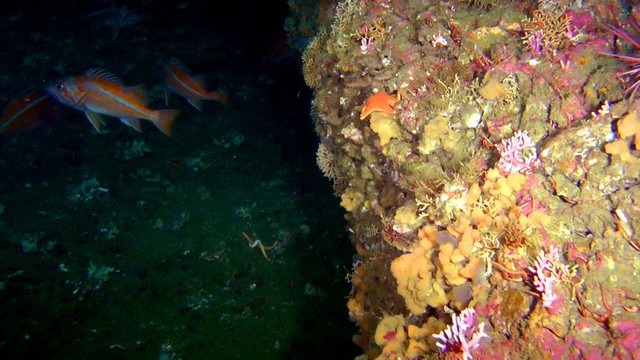
2020 Brings New Protections For West Coast Seafloor Habitat
READ ON
Along with the new year, the West Coast is getting new protections for corals and sponges that live on the seafloor.
Regulations stat started Jan. 1 restrict bottom trawl fishing on about 90% of the seafloor off Oregon, Washington and California.
Bottom trawlers drag weighted nets along the seafloor to catch dozens of groundfish species, including lingcod, Dover and petrale sole and all kinds of rockfish. In the process, they can damage corals and sponges that live on the ground.
Ashley Blaco-Draeger with the environmental group Oceana said corals and sponges don’t recover easily from the damage because they grow very slowly.
“They only grow about a millimeter a year,” she said. “So once these structures are destroyed it can take hundreds or thousands of years for them to recover — if ever.”
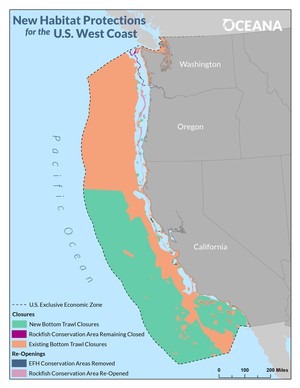
New rules close more than 140,000 square miles of the ocean to bottom trawl fishing to protect corals and sponges that live on the seafloor. Courtesy of Oceana
Environmental groups worked with the fishing industry to determine which fishing grounds could be reopened while others were closed.
Yelena Nowak, director of the Oregon Trawl Commission, said her group is happy with the new rules even though they close some fishing grounds.
“Quite a bit of square mileage is being opened, and those are the historic productive bottom trawl fishing grounds,” she said. “We are very stoked about that.”
A long band of the ocean off the coast was closed as a Rockfish Conservation Area to protect overfished species, but many of those fish have recovered. So, while the new rules close more than 140,000 square miles of the seafloor, they also reopen some Rockfish Conservation Area off the coasts of Oregon and California.
“That’s a big win,” Nowak said. “Historically, those were some of the most productive areas. We haven’t had access to those since 2002.”
Blacow-Draeger said the West Coast seafloor has a lot of corals and sponges that people can’t see because they’re so far off the coast and so deep in the ocean.
“These protections will safeguard really beautiful, colorful and fragile rocky reefs, coral gardens and sponge beds that are just as vibrant as the tropical corals we think of in other places,” Blacow-Draeger said. “These habitats are important to the health of the ocean because they serve as the nurseries, breeding grounds and feeding grounds for a lot of recreational and commercially important species like rockfish as well as other sea creatures like octopus and sea stars.”
Nowak and Blacow-Draeger agreed there were compromises on both sides in deciding which of the most productive fishing grounds should be open and which of the most valuable seafloor habitat should be closed. Nowak said protecting seafloor habitat will help the commercial fish species the fleet depends on.
“We do see potential benefits.” she said. “We have younger kids in the fishery. We have lots of family businesses that are multi-generational and no one wants to see the fishery collapse like it did in the past.”
Copyright 2020 Oregon Public Broadcasting. To see more, visit opb.org
Related Stories:
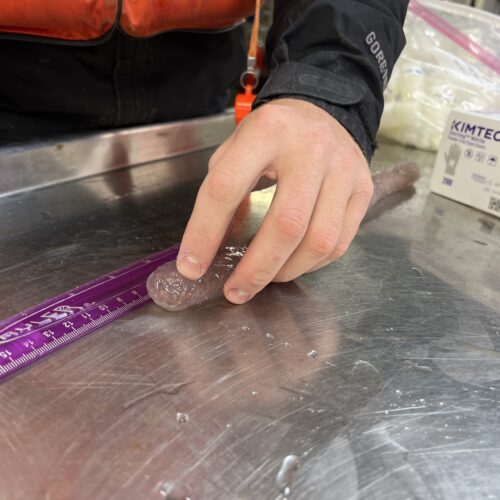
Pickle-shaped sea creatures popping up along the NW coast, why it’s important
Scientist Kris Bauer measures a pyrosome that was caught in a net aboard the Bell M. Shimada in May 2022. (Credit: Courtney Flatt, Northwest News Network) Listen (Runtime 0:59) Read
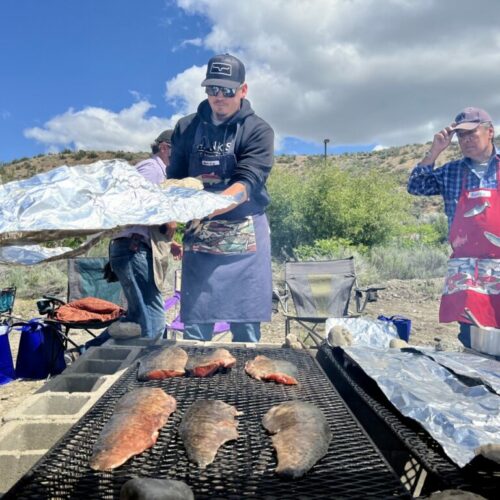
Para las tribus, la bienvenida del salmón al Alto Columbia es un recordatorio del ‘trabajo de toda una vida’
El sol apenas comenzaba a salir sobre el río Columbia en Bridgeport, Washington, cuando un pescador Colville capturó el primer salmón de la temporada.
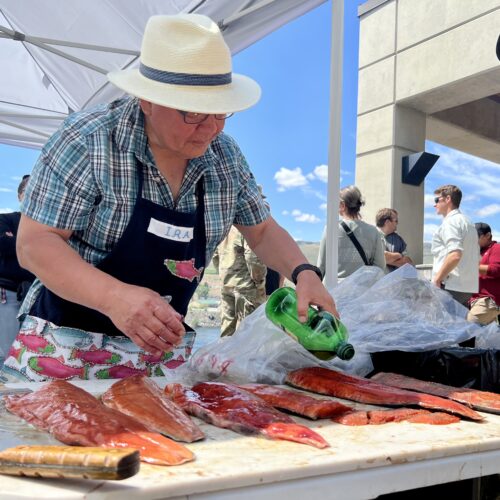
For tribes, welcoming salmon to the Upper Columbia is a reminder of ‘lifelong work’
Ira Stevenson preps salmon filets for the salmon bake after a First Salmon ceremony at Chief Joseph dam in north central Washington. (Credit: Courtney Flatt.) Listen (Runtime 4:04) Read The















